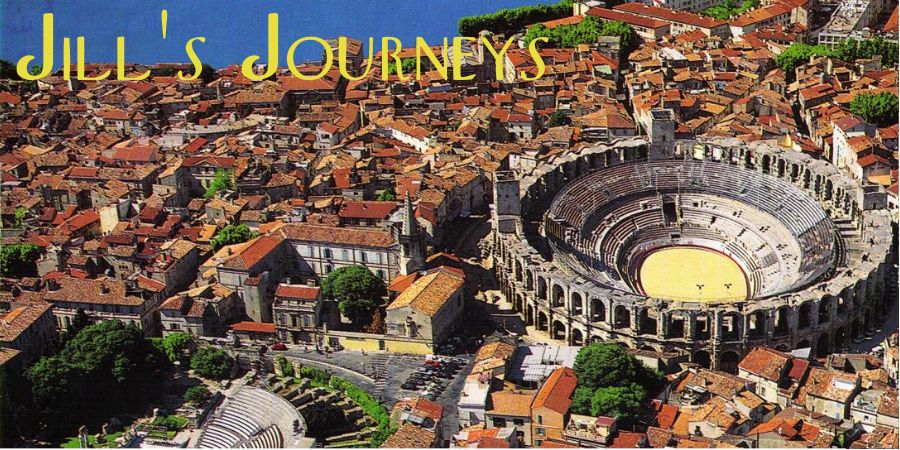
Arles
Tuesday, 31 January 2017
In 49 BC, in the midst of a conflict between
Julius Caesar and
As usual, I took lots of pictures....
Monday, 6 February 2017
Cloisters, Cryptoporticos, Ancient Graveyard and Van Gogh & Gauguin
The cloisters of St. Trophime date from the 12th century and consist of the cloisters courtyard, chapterhouse, refectory, and Bishop's Palace. Expansion was done in both the 14th and 15th century.
The Cryptoporticos was part of the Roman forum complex from the 2nd century. They made up the arcades and shops that served that busy area. They are now more than 6 metres underground, and make for quite a spooky walk!
The Alycamps is the Roman and Medieval
Graveyard, also known as the City of the Dead.
It was one of the most famous cemeteries in the western
world. Both St. Honorat
and Genesis, the
Martyres from
This is the first place where Van Gogh and
Gauguin painted together when they shared a house in
Friday, 10 February 2017
Last Days in
The Montmajour Abbey was begun in the 9th
century just outside
The abbey is built high on a hill and has a spectacular view. Not surprisingly it was another of Van Gogh's favorite spots. He did over 20 paintings from here.
Finally, I visited the Musée Reattu, an art
gallery that is housed in the original house of the Knights
Hospitalers in
Hope you enjoy the pictures!
Thursday, 16 February 2017
The Palais du Papes
Construction of this impressive Gothic palace began in 1252 and became the Pope's residence in 1309. Subsequent Popes added to the building between 1334 and 1364.
It was eventually an astounding 118,403 square feet! The Grand Chapel alone is 150 feet long.
In 1316, 500 church officials worked here, in addition to 1,000 lay workers.
But, in 1370 the decision was made to return
the Papal centre to
The building served many other purposes in the following years, including a fort and prison, but thankfully has been resurrected and is now a world heritage site.
I loved my visit here, and was very impressed with how well organized and how informative tour was. I hope you enjoy the pictures!
Wednesday, 22 February 2017
The Chartreuse: 14th century monastery
Founded by Pope Innocent VI in 1353 this
monastery is located in Villeneuve-lez-Avignon, across the
The monastery consists of the cloisters, 40 monks cells, the chapterhouse, refectory, laundry, herb garden, and " isolation cells " used for the sick, or monks being punished for transgressions. ...and of course the church.
Some of the site is in ruins, but much of it is in really good repair. The gardens are lovely, and the setting spectacular, with the 12th century Fort St. Andrew looming above.......more on the fort later.
Hope you like the pictures. ...
Monday, 27 February 2017
Fort St.
Andrew
In 1291 King Phillip IV
built Fort St. Andrew on what was then the border between
When I was at the fort the walk along the ramparts, and the visit to the tiny chapel were much enhanced by the sight and scent of the numerous apple trees which were in full bloom. Spring is very much in evidence here. It's lovely! There are photos. ...
Photos: January 31: Arles
Photos: February 01: Arles
Photos: February 02: Arles
Photos: February 04: Arles
Photos: February 05: Arles
Photos: February 06: Arles
Photos: February 07: Arles